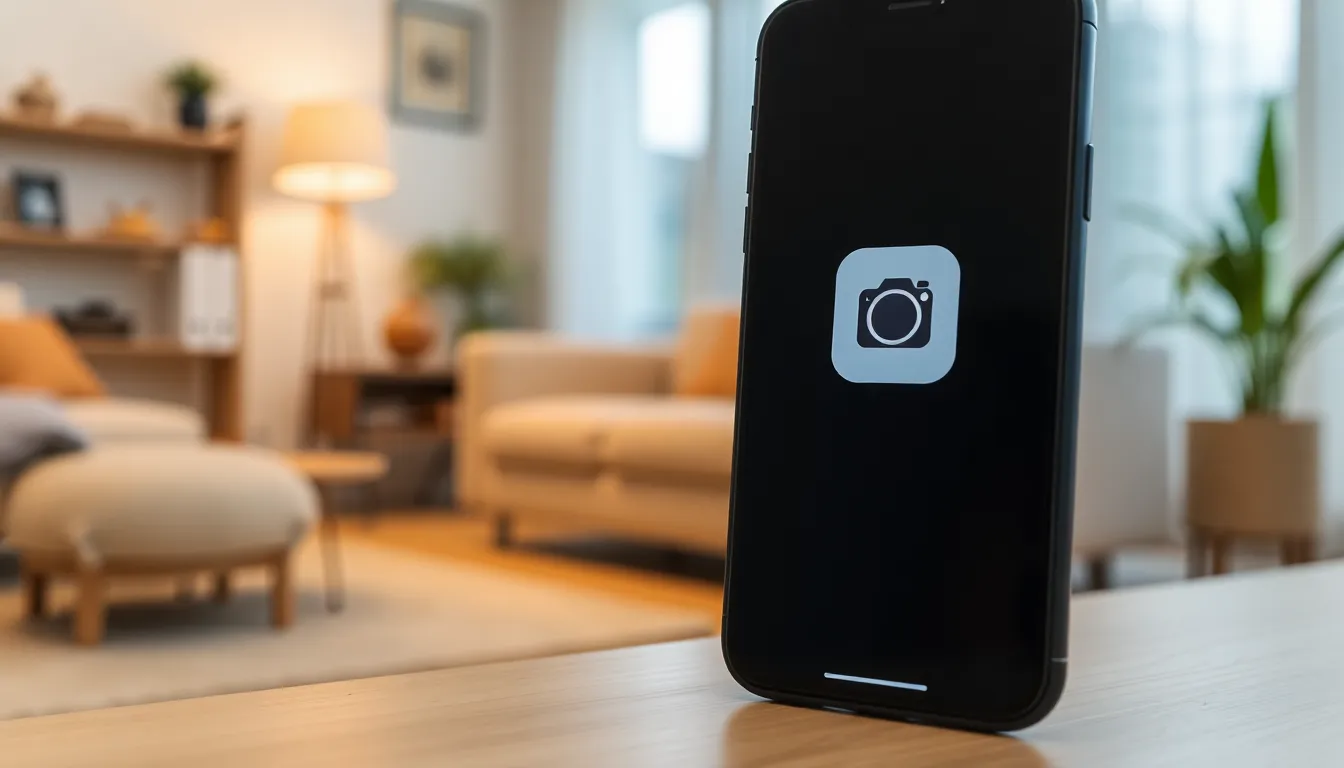Table of Contents
ToggleIn a world where everyone’s a photographer, knowing how to turn off the camera on an iPhone can be a game changer. Picture this: you’re in a serious meeting, and suddenly, your phone decides to snap a candid shot of your bewildered face. Awkward, right? Luckily, it’s not rocket science to regain control over your device.
Understanding Camera Settings on iPhone
Camera settings on an iPhone play a crucial role in the overall user experience. Familiarity with these settings allows users to customize their photography and manage their device more effectively.
Default Camera Functionality
Default camera functionality includes quick access through the home screen and lock screen. Users can launch the camera app by swiping left from the lock screen or tapping the camera icon. Photos and videos taken by default save automatically to the Photos app. Some features, like HDR and Live Photos, activate automatically based on lighting conditions, enhancing photo quality. Understanding these features ensures users maximize their photography potential.
Importance of Camera Management
Camera management is essential for privacy and for preventing unintended captures. Users face the risk of capturing awkward moments during meetings or private conversations without intention. Turning off the camera when not in use minimizes these risks. Effective management of permissions within the device settings allows for granular control, giving users peace of mind. Customizing camera access is necessary for maintaining privacy and ensuring appropriate usage of the device.
Methods to Turn Camera Off on iPhone

Managing the camera on an iPhone involves using specific features designed for convenience and privacy. Here are two primary methods to turn off the camera.
Using the Control Center
Access the Control Center by swiping down from the upper right corner of the screen. Locate the camera icon, present here for easy access. Tap the icon once to close the camera app quickly if it’s currently in use. The Control Center provides a fast way to manage apps, making it handy for avoiding accidental captures.
Disabling Camera from Settings
Navigate to the Settings app to find more extensive control over the camera. Select “Screen Time,” followed by “Content & Privacy Restrictions.” From there, enable content restrictions and scroll down to “Camera.” Toggle the switch off to disable camera access entirely. This adjustment ensures that the camera remains off even when the app is launched.
Troubleshooting Common Issues
Users may encounter various issues while attempting to turn off the camera on their iPhones. Addressing these common problems helps ensure a smoother experience.
Camera Not Responding
When the camera doesn’t respond, users should check for any pending software updates. The operating system can affect app functionality. Restarting the iPhone often resolves temporary glitches. If the issue persists, users can force close the camera app by swiping up from the bottom of the screen. After closing, reopening the app may restore normal operation. Should problems continue, a device reset might be necessary.
Resetting Settings
Resetting settings can resolve persistent camera issues. Users can access this option under the Settings app by selecting General, then transferring or resetting the iPhone. Choosing “Reset All Settings” maintains personal data while restoring default preferences. This option often fixes app-related issues without compromising saved information. Users should note that this process requires reconfiguration of Wi-Fi passwords and preferences, but it can restore camera functionality effectively.
Alternatives to Turning Off the Camera
There are alternative methods to control the camera on an iPhone that enhance privacy and usability.
Using Do Not Disturb Mode
Enabling Do Not Disturb Mode prevents notifications from distracting during important moments. This feature can keep the camera from inadvertently activating due to incoming alerts. To access this option, swipe down from the top-right corner and tap the crescent moon icon. Customizing specific settings allows users to choose which calls and messages can come through, providing a tailored experience. This can minimize interruptions and ensure a more private environment during meetings or conversations.
Utilizing Guided Access
Guided Access restricts users to a single app, offering a way to prevent the camera from opening unexpectedly. Activating this feature requires navigating to Settings, selecting Accessibility, and finding Guided Access under General. Once enabled, users can start Guided Access by triple-clicking the side button while in the desired app. This approach allows full focus on the task at hand without wandering into unwanted areas, such as the camera. Configuring time limits and touch features makes this tool even more effective for maintaining user control.
Mastering how to turn off the camera on an iPhone is essential for maintaining privacy and avoiding unwanted captures. By using the Control Center or adjusting settings, users can easily manage their camera access. Understanding these features not only enhances user experience but also reinforces control over device functionality.
Incorporating methods like Do Not Disturb Mode and Guided Access further ensures that the camera remains inactive during critical moments. With these strategies in place, users can enjoy their iPhone’s capabilities without the worry of accidental photos, allowing for a more focused and personalized experience.




